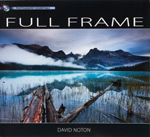David Noton recalls shooting in violent conditions on a cliff top along the Jurassic Coast and how he nearly lost his camera kit to the sea
 One of the foremost travel and landscape photographers working today, David Noton tirelessly travels the world in search of new challenges, which he shares with you here
One of the foremost travel and landscape photographers working today, David Noton tirelessly travels the world in search of new challenges, which he shares with you here
I took this picture during a stormy afternoon on the Jurassic Coast in Dorset near where I live. There were very intense southerly winds that day, and because of this I witnessed some of the strongest seas that I?ve seen along this coast. There was so much wind that I found it quite difficult even to stand up. Nevertheless, I sensed the picture potential in what I was seeing and thought that if I could just keep the camera (and myself) steady for a moment, I could come away with quite a dramatic image.
I was situated on a cliff, huddled just down the slope from the top. As I unpacked and readied my equipment, I realised just how strong the wind was when it took my camera bag and rolled it down the slope towards the sea. It?s a difficult choice in that situation. Do you leave the rest of your gear and go after it, risking its safety as well as your own? Or do you just sacrifice your camera bag? I opted to go after it, and luckily I was able to rescue it.

The Jurassic Coast is an area that I know well. It has very different moods in each of the seasons, so it?s one I visit a lot. I?ve mentioned before about my belief in exploring a location in different lighting and weather conditions, and the Jurassic Coast really lends itself to this ethos.
With my camera bag back in tow I hurriedly set up my tripod, and I didn?t have long to consider my composition. In addition to the fierce winds, heavy sea spray crashed over the cliff top, and as I tried different compositions I was only able to get about three frames at a time before I would have to stop and clean the lens.
Luckily, I knew that I wanted to capture the force of the weather, as I was particularly drawn to the sheer power of the waves crashing on the rocks. I decided that this would be my focal point. To emphasise this I opted to go for a long lens perspective, using my 70-200mm at a focal length of 150mm. This gave the effect of compressing all the elements to better emphasise the sheer energy of the waves with the cliffs in the background.
With that foundation I could then experiment with exposure ? going long to capture the forceful movements of the wind and water, or using a faster shutter speed to freeze the drama as it unfolds.
Luckily for me, I had wanted a faster shutter speed to freeze the crashing water because the winds were so strong that a long exposure would have been difficult, if not impossible. Working with a long exposure even with a tripod in those conditions would have certainly led to camera shake. In the end I used a very fast shutter speed of 1/500sec so I could really freeze the motion of the water. A lot of time I?m trying to slow down my exposures to get motion, but there was so much energy in this scene that the faster shutter speed better captures that drama and gives a lovely texture to the surface of the water.

What makes the picture really work for me are the shapes of the waves breaking. If you look closely, you can see that they form an ?S? shape through the frame. There is also a lovely texture and tone in the waves, and because of this great texture I later considered whether this image would be better in black & white. Back at the computer I looked at the picture in colour and what made the image successful were the tones in the breaking waves. It occurred to me that the colour itself was not bringing anything to the picture.
I find that I?m enjoying black & white more and more these days. It?s like I?m going full circle with my photography. What makes a good black & white image is tone, texture and shape. As I was shooting in quite warm late afternoon light, this scene jumped out at me as being perfect for a black & white picture.
 David Noton?s new book Full Frame is now available price £25. It follows David?s journey to ten different locations around the world and gives invaluable insight into his approach and working methods. For more details, visit www.davidnoton.com
David Noton?s new book Full Frame is now available price £25. It follows David?s journey to ten different locations around the world and gives invaluable insight into his approach and working methods. For more details, visit www.davidnoton.com






